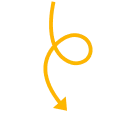Fertilization
Fertilization
Fertilization is the union of male(sperm) and female(oocyte) gametes to form a zygote and marks the beginning of the pregnancy. Embryonic life begins with fertilization. Fertilization process require 24 hours.
During this lesson we need to discuss about
- Ovulation
- Getting the spermatozoa ready
- Key steps of fertilization
- The formation of the zygote
- Abnormal Fertilization
Ovulation
The fertilization takes place in the female genital track.
Roughly a week before the midpoint of the menstrual cycle the dominant follicle develops in one of the two ovaries. This grows faster than the other tertiary follicles and prepares itself for ovulation. It reaches a diameter of up to 25 mm and is also known then as the graafian follicle.
Since at this moment the cumulus oophorus has detached itself from the granulosa, the oocyte “swims” surrounded by its cumulus cells (so-called corona radiata) in the follicle fluid.
The graafian follicle bulges out the ovary’s surface. It is ready to tear open, i.e., its wall and the peritoneal covering will soon rupture and its watery contents will pour into the infundibulum of the tuba, together with the oocyte.
A hormonal regulation is responsible for follicle maturation. Approximately one-and-a-half days before the midpoint of the cycle, the concentration of the luteinizing hormone (LH) rises steeply.
In the first week of the cycle the maturation of the oocyte in its associated follicle depends on the progress of the maturation of the surrounding follicle cells.
The fittest follicle with its oocyte becomes the dominant follicle in the second cycle week and, later, a graafian follicle.
Up to just under two days before ovulation, the maturation of the oocyte consists in its ingestion of substances (growth of the yolk) that are supplied by the surrounding granulosa cells that are anchored through the pellucid zone at the oocyte surface.
The oocyte nucleus [2n, 4C] is also matured in the last days before the LH peak.
Up to that point it was arrested in the extremely elongated prophase (= dictyotene) of the first meiosis.
Through the «maturation» the nucleus changes in the diakinesis (of the prophase) and prepares itself for the completion of the first meiosis, which is triggered by the LH peak.
With the end of the first meiosis the name of the oocyte changes from primary oocyte to secondary oocyte.
Through the effects of LH on the granulosa cells, these have begun to loosen their cellular bonds and to multiply. They now also produce progesterone that is released into the follicle fluid.
Through the separation of the homologous chromosomes in the first meiosis a haploid (reduplicated) set of chromosomes (1n, 2C) is now to be found in the secondary oocyte. The first polar body also contains 1n, 2C.
Via a fine cytoplasmic connection the polar body and oocyte remain bound together following the meiotic division, similar to what takes place when male gametes are formed.
Besides the hormones, the granulosa cells also secrete an extra-cellular matrix, mainly hyaluronic acid, into the follicle fluid. Before ovulation the follicle fluid volume increases markedly. The cumulus cell bonds loosen further. In this way, together with the enclosed oocyte, they free themselves from where they were attached to the follicular wall and now swim in the follicle fluid. The wreath of granulosa cells that enclose the oocyte is called the corona radiata.
The follicle and the oocyte are now ready for ovulation that takes place roughly 38 hours after the LH peak.
Ovulation, i.e., the emergence of the secondary oocyte from the follicle, depends on the disintegration of the follicle wall and the rupture of the ovarian surface.
The hyaluronic acid has the property that it binds water molecules. So, tension to the follicle wall increases.
On the ovarian surface above the follicle that is about to burst, a white point forms shortly before the rupture (due to compression of the blood vessels), the so-called stigma.
When the surface ruptures the mass of cumulus cells, which are saturated with hyaluronic acid and which shelter the oocyte, reach the fallopian tube together with serous yellow follicle contents.
In the fallopian tube, the secondary oocyte is surrounded by the corona radiata and scattered parts of cumulus cells (so-called cumulus cell cloud). The fluid that lies in between is sticky and stringy (effect of the hyaluronic acid) with a high concentration of progesterone (to attract the spermatozoa).
Getting the Spermatozoa Ready
There are parallels between getting the spermatozoa ready and the maturation of an oocyte but there are also clear differences.
The spermatozoa have to go through several temporal maturation steps in a series of different locations in order to be capable of penetrating into the oocyte. While the oocyte’s maturation steps involve the storing of yolk and the process of meiosis, functional maturation steps are required with the spermatozoa, which mainly involve their motile abilities along with their ability to penetrate through the egg covering.
he spermatozoa experience an initial maturation step during the time they are “stored” in the epididymis. When the ejaculation occurs, a second step follows that leads to a sudden activation of their motility.
The third step takes place during their stay in the female genital tract, especially during the ascension towards the ovary through the uterus and fallopian tube. The spermatozoa experience thereby the so-called capacitation. Finally, the last activation step follows: the acrosome reaction in the immediate vicinity of the oocyte.
The maturation and activation of the spermatozoa occur in the following four steps:
- Storage in the epididymis ==> Maturation
- Ejaculation ==> Activation
- Ascension to the ovary ==> Capacitation
- Near the oocyte ==> Acrosome reaction
Key Steps of Fertilization
The process of fertilization in humans involves a number of key processes
- Capacitation
- Acrosome Reaction
- Cortical Reaction
Capacitation
Capacitation occurs after ejaculation, when chemicals released by the uterus dissolve the sperm’s cholesterol coat
- This improves sperm motility (hyperactivity), meaning sperm is more likely to reach the egg (in the oviduct)
- It also destabilises the acrosome cap, which is necessary for the acrosome reaction to occur upon egg and sperm contact

Acrosome Reaction
When the sperm reaches an egg, the acrosome reaction allows the sperm to break through the surrounding jelly coat
- The sperm pushes through the follicular cells of the corona radiata and binds to the zona pellucida (jelly coat)
- The acrosome vesicle fuses with the jelly coat and releases digestive enzymes which soften the glycoprotein matrix
- The sperm then pushes its way through the softened jelly coat and binds to exposed docking proteins on the egg membrane
- The membrane of the egg and sperm then fuse and the sperm nucleus (and centriole) enters the egg

Cortical Reaction
The cortical reaction occurs once a sperm has successfully penetrated an egg in order to prevent polyspermy
- Cortical granules within the egg’s cytoplasm release enzymes (via exocytosis) into the zona pellucida (jelly coat)
- These enzymes destroy sperm binding sites and also thicken and harden the glycoprotein matrix of the jelly coat
- This prevents other sperm from being able to penetrate the egg (polyspermy), ensuring the zygote formed is diploid

The Formation of The Zygote
After the spermatozoon has impregnated the oocyte, i.e., has delivered the paternal portion of the genetic material, things are now set into motion within the oocyte so that the paternal as well as the maternal genetic information are put into a form that allows both to be brought together in a proper way. The unpacked DNA is enclosed in the slowly forming paternal and maternal pronuclei.
Along side several morphological changes can be seen.
1. Sperm passes through the corona radiata
- this is the result of enzymatic action of tubal mucosa and semen. Sperm tail movements also help penetration of corona and zona pellucida
2. Sperm penetrates the zona pellucida: digests a path by action of enzymes released from its acrosome
- Only 1 sperm enters the oocyte and fertilizes it, even though several may penetrate the zona pellucida
- Two sperm may take part in fertilization during an abnormal process called dispermy resulting in a triploid embryo (69 chromosomes), but it nearly always aborts or dies shortly after birth
- If 2 female pronuclei take part in fertilization, it is called polygyny
3. Sperm head attaches to surface of the oocyte, plasma membranes of oocyte and sperm fuse, and then break at contact point
- Head and tail of sperm enter oocyte cytoplasm with sperm’s plasma membrane being attached to oocyte’s plasma membrane Once inside the cytoplasm of the oocyte, the sperm tail degenerates
4. Oocyte responds by
- Zonal reaction: change in zona pellucida inhibits entry of more sperm, due to substance of oocyte cytoplasm
- Secondary oocyte completes second meiotic division and its chromosomes (22 plus X) arrange themselves in a vesicular nucleus called the female pronucleus. The second polar body is extruded
5. Sperm head enlarges and forms the male pronucleus
6. The male and female pronuclei approach each other in the oocyte center, meet, and lose their nuclear membranes. They resolve their chromatin into a complete single haploid set of chromosomes which become organized on a spindle
7. After the maternal and paternal chromosomes intermingle, metaphase of the first cleavage mitosis takes place, and the normal chromosome number is reconstituted
8. Anaphase of the first cleavage mitosis then occurs
9. The first 2 blastomeres are next seen, following cell division, and they are surrounded by the zona pellucida
After the two pronuclei have come as close together as they can, no merging of them takes place, i.e., a fitting together of the chromosomes of the two pronuclei within a single nucleic membrane does not happen. It is much more accurate to say that the nucleic membranes of both pronuclei dissolve and the chromosomes of both align themselves on the spindle apparatus at the equator.
The zygote, the first cell of a new organism with an individual genome (2n4C) is created by the alignment of the maternal chromosomes together with the paternal ones on a common spindle apparatus.
Abnormal Fertilization
◦PARTHENOGENESIS: oocyte is activated without sperm penetration and development may begin. No record of viable birth via this method
- Cleaving oocytes in ovary may develop into an ovarian teratoma
◦SUPERFECUNDATION may follow polyovulation. An oocyte is fertilized by spermatozoa from one male and another oocyte is fertilized by a second male. Seen in various mammals, not usual in man.
◦SUPERFETATION: ovulation and fertilization occur during an established pregnancy



